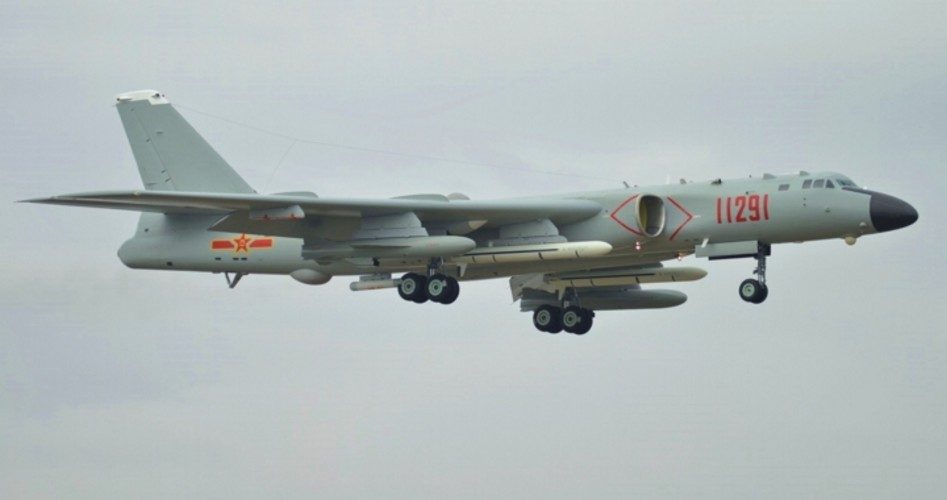
The Chinese People’s Liberation Army Air Force (PLAAF) uploaded a video simulation posted on YouTube on September 19 depicting Chinese H-6K long-range bombers (shown) conducting an attack on an island air base. Though the target is not identified in the video, the South China Morning Post (SCMP) said it “has more than a passing resemblance to the U.S. facility [Andersen Air Force Base] on the island of Guam.” Reuters said that the runway layout of the targeted base appeared “to be the main U.S. air force base on Guam.”
The video, titled “The god of war H-6K goes on the attack!” was posted on the PLAAF account on Sina Weibo, a Chinese microblogging website. PLAAF wrote in the description of the video: “We are the defenders of the motherland’s aerial security; we have the confidence and ability to always defend the security of the motherland’s skies.”
Collin Koh, a research fellow at Singapore’s Institute of Defence and Strategic Studies, told Reuters that the propaganda video’s purpose is to project PLAAF’s increasing long-range power.
“The video is meant to warn the Americans that even supposedly safe, rearward positions such as Guam may come under threat when conflicts over regional flashpoints, be it Taiwan or the South China Sea, erupt,” Koh said.
Drew Thompson, a former U.S. Defense Department official who is now at the Lee Kuan Yew School of Public Policy at the National University of Singapore, told SCMP that the video is a warning to surrounding countries: “The messages put out by the People’s Republic of China propaganda machine threaten anyone who opposes [mainland] China or the Communist Party,” Thompson said. “[The footage] warns that the PLA is prepared to use force to settle differences.”
The Chinese video comes at a time of increasingly tense relations between mainland China and the Republic of China (ROC) on Taiwan, as well as between China and the United States.
When U.S. Secretary of Health and Human Services Alex Azar met with the president of the ROC in early August to discuss Taiwan’s successful response to the COVID pandemic, he became the highest ranking U.S. official to visit Taiwan in decades. The Chinese appeared to not view this visit favorably.
It is probably not coincidental that the Chinese chose to send jets across the mid-line of the Taiwan Strait on August 10, while Azar was visiting. The jets were tracked by land-based Taiwanese anti-aircraft missiles and were “driven out” by patrolling Taiwanese aircraft.
The United States and China have also been at odds over the presence of U.S. ships in the South China Sea, in the vicinity of islands that the communist government has laid claim to unilaterally, despite competing claims from Brunei, Taiwan, Indonesia, Malaysia, the Philippines, and Vietnam.
Back in July, when the Nimitz Carrier Strike Group conducted naval exercises in the South China Sea, China’s foreign ministry spokesperson Zhao Lijian stated that the exercises were performed “totally out of ulterior motives” and undermined stability in the area.
Image: Alert5/Wikimedia Commons
Warren Mass has served The New American since its launch in 1985 in several capacities, including marketing, editing, and writing. Since retiring from the staff several years ago, he has been a regular contributor to the magazine. Warren writes from Texas and can be reached at [email protected].
Related articles:
China Masses Missile Launchers Within Range of Taiwan
Tomorrow’s Superpower? China’s Naval Build-up Could Oust U.S. from Pacific
North Korea Tests Ballistic Missile Capable of Reaching U.S. Base on Guam


